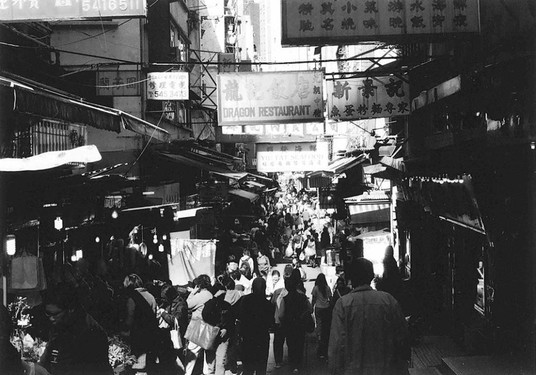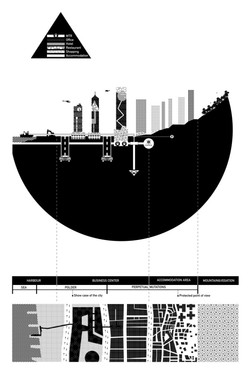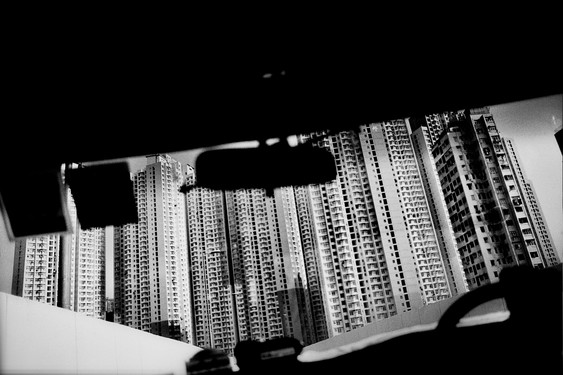-
PostsPublication date
29/11/13
Author(s)
Gilles Vanderstocken et Charlotte Lafont-Hugo Hong Kong
 Hong Kong
Hong Kong Hong Kong
Hong Kong Hong Kong
Hong Kong
Hong Kong is one of the most fascinating cities for architects. The city is a laboratory for high-density vertical environment and efficient use of it. Hong Kong «represents a condition that has been advocated by Jane Jacobs's classic text of 1961, The Death and Life of Great American Cities, which argued for high densities, mixed uses, mixed schedules of operation, and good connection in and between city neighbourhoods.» (1)
Hong Kong city shape used to be strictly based on pragmatic strategies, geographic constraints and economic stakes. From the beginning, the island banks were not very large and the main part of the island was already steep slopes with dense vegetation. Thanks of the deep channel of the peninsula and the possibility of connection with mainland china the British settled the harbour at the north side.
Afterwards, because of the topography, the city has been following a straight line from east to west. The main roads mostly parallel to the sea, quickly made the city frame. The extension of Hong Kong, curbed between see and mountains, had no choice but to be vertical. It defined the visual style of Hong Kong. The verticality is not a centralized phenomenon for a specific neighbourhood but a country characteristic. That makes Hong Kong unique.
Beyond the compact settlement and the high density, it is the multi-level movement and activ-ities that make the specificity of Hong Kong organization. When you are in Hong Kong, you cannot comprehend space just horizontally but you have to think it vertically too. The façades of buildings not necessary coincide with the activities inside. You can imagine a building as a street or a district. Sometimes, in the same level, you can have a record-shop next to a lawyer office or an art gallery.
«Hong Kong's form and operation demonstrate an effective use of land for urban development and an efficient use of energy for moving people about the urban area.» (2)
Beyond the aspect of Hong Kong as a performing city, it is the way of people uses the territory that makes a real interest. The city shape is free enough to absorb the variation of use or need. Any part of a building might change functions at any time. If the global aspect of the urban grid radically doesn't change, the profile of city parts is constantly transformed by micro-events. Hong Kong embodies the urban planner concept of «Compact City» as a fantasy of chronic appropriation of space.Gilles Vanderstocken - Charlotte Lafont-Hugo(1) Extract of « The Making of Hong Kong – From Vertical to Volumetric. Barrie Shelton, Justyna Karakiewicz , Thomas Kvan. »
(2) Extract of « The Making of Hong Kong – From Vertical to Volumetric. Barrie Shelton, Justyna Karakiewicz , Thomas Kvan. »

Wallonie-Bruxelles Architectures est une agence de promotion
culturelle et économique des architectes de Bruxelles et
de Wallonie sur la scène internationale.
Home  Posts
Posts  Hong Kong
Hong Kong
